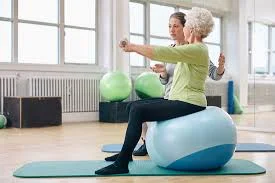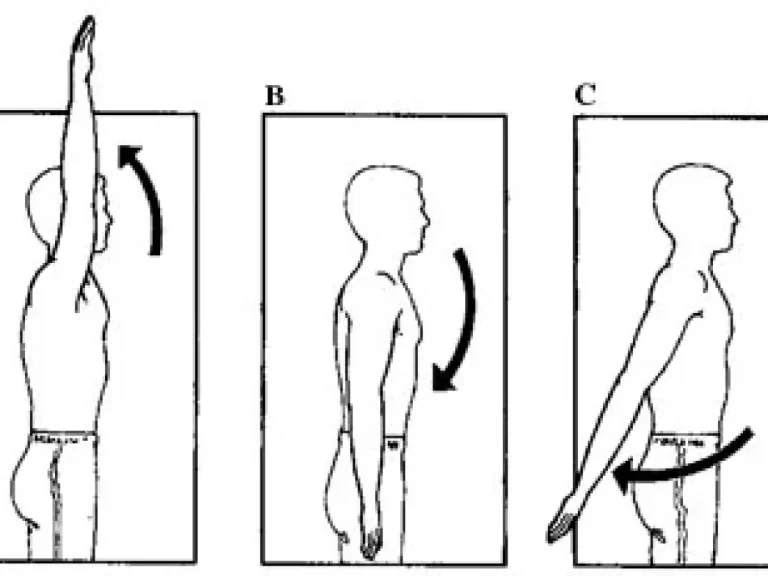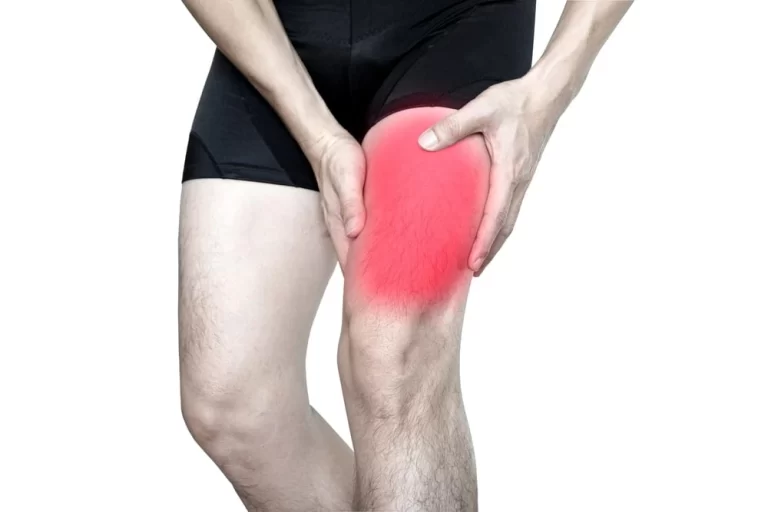15 Best Exercises For Posterior Ankle Impingement Syndrome
Introduction:
Compression of soft tissue or bony structures at the rear of the ankle during plantarflexion (pointing the toes downward) results in the painful condition known as Posterior Ankle Impingement Syndrome (PAIS). Athletes, such as dancers, soccer players, and gymnasts, frequently suffer from Posterior Ankle Impingement Syndrome (PAIS), which can be caused by repetitive ankle motions or past injuries, including ankle sprains or fractures.
An important component of treating posterior ankle impingement syndrome is physical therapy. The goals are to restore normal function, increase ankle strength and mobility, and lessen pain and inflammation.
Restoring ankle function is crucial, and a thorough treatment plan should incorporate appropriate exercises for Posterior Ankle Impingement Syndrome that focus on strength and flexibility.
For a customized program and treatment plan that you can trust, scheduling a round of physical therapy is an excellent choice if you’re unsure of where to begin or how to proceed. You may feel in charge of your ankle impingement rehabilitation with the correct knowledge and exercise regimen. You will quickly observe an ongoing improvement in your symptoms if you try the exercises and maintain contact with your physician or physical therapist.
Make sure the workouts are safe for your recovery stage by speaking with your doctor. Avoid activities that cause pain. Before working out, do some light range-of-motion exercises to warm up. Exercise should be done cautiously and slowly to avoid pain.
Causes:
Activities Using Plantarflexion Repeatedly
- Activities that require a lot of toe-pointing, including running, ballet, soccer, and gymnastics, can put stress on the posterior ankle structures.
Soft Tissue Impingement
- During movement, thick or inflammatory soft tissues, such as ligaments, the synovium, or the posterior joint capsule, may become trapped between bones.
Bony Deformities
- Impingement can result from reduced space in the back of the ankle caused by an enlarged posterior talar process or bone spurs.
Ankle Trauma or Sprains
- Ankle instability, scar tissue, or inflammation caused by either acute or chronic ankle injuries can raise pressure in the rear ankle.
Biomechanics or footwear issues
- The posterior ankle structures may be subjected to increased strain due to abnormal foot position or unsuitable footwear.
Signs and symptoms:
Pain in the Posterior Ankle
- Ankle pain in the back, particularly before or after exercises like running, jumping, or plantarflexion (pointing the toes).
Sensitivity to Touch
- Stiffness or soreness may result from applying pressure to the soft region at the Achilles tendon, behind the ankle joint.
Limited Range of Motion or Stiffness
- Stiffness or unable to fully extend the toes.
- The inability to fully plantarflex due to pain can affect one’s ability to do ballet or jump.
Symptoms Getting Worse with Activity
- The symptoms, which are common among athletes (such as football players and dancers), worsen with rest and with physical activity.
Pain During Lunges or Deep Squats
- Stretching or compressing the rear of the ankle might make symptoms worse.
Sensation of Catching or Clicking
- Due to tissue or tendon involvement, it could be felt when moving.
Swelling
- Ankle edema is noticeable, particularly after exercise.
- In some cases, warmth may be observed, indicating joint capsule or tendon membrane inflammation.
Pain during Plantarflexion Force
- When the foot is pointing downward, as when standing on tiptoes, there is a sharp or pinching pain.
Instability or weakness (in some situations)
If the pain continues, people could come across:
- Inability to move quickly.
- Inability to fully engage the ankle during dynamic workouts.
Exercise’s advantages:
Controlling Inflammation and Reducing Pain
- By lowering feelings of pain without putting excessive stress on the wounded tissue, low-load isometrics may have an analgesic effect.
- Improves blood flow to lessen edema and help in recovery.
Increasing Muscle Strength
- Supports ankle function by strengthening the tibialis posterior, gastrocnemius, soleus, and peroneal muscles.
- Increases dynamic ankle stability and lessens the strain on the ankle’s posterior tissues.
- Supports the restoration of functional movement patterns and stops muscular atrophy.
Range of Motion Restoration (ROM)
- Prevents or alleviates stiff joints caused by scar tissue or inflammation.
- Prevents impingement and guarantees the entire range of dorsiflexion and plantarflexion.
- Promotes healthy ankle joint biomechanics during running or walking.
Return to Your Functional Activities
- Ensures a safe return to full exercise without worsening symptoms.
- Uses movement patterns from the real world to support proper biomechanics.
Balance and Proprioception Improvement
- Improves the neuromuscular control in the ankle area.
- Lowers the chance of recurrence or re-injury during daily activities or sports.
- Helps in identifying instability or unusual movement patterns early on.
Psychological Advantages
- Lessens mobility anxiety, which is a common worry after an injury.
- Increases the patient’s sense of control and involvement with the healing process.
- Increases motivation to follow rehabilitation and general well-being.
Before beginning an exercise program, the following safety precautions should be taken:
A physician or physical therapist will choose the right workouts for your particular problem. Before beginning any health program, consider a few safety measures to maximize its benefits.
If something feels off, pay attention to what your body is telling you rather than pushing yourself. Excessive or chronic pain may indicate overwork, even though pain is a common side effect of exercise. To increase your capacity to manage pain, begin with low-impact activities and progress to increasingly difficult ones.
Exercises For Posterior Ankle Impingement Syndrome:
Ankle Alphabet
- Sit down on a comfortable chair.
- Extend your leg out.
- Use your big toe to create the alphabet’s letters in the air after that.
- Proceed methodically from point A to point Z.
- Then return to your neutral position.
- Then relax.
- Repeat these exercises 5 to 10 times.
 Alphabet
Alphabet
Ankle pump
- Lie down on a bed to start.
- Now flex your toes upward.
- Hold this position for a few seconds.
- Point your toes forward as if you were pushing the gas pedal on a car.
- Hold this position for a few seconds.
- Then return to your neutral position.
- Then relax.
- Repeat these exercises 5 to 10 times.
 ankle pumps
ankle pumps
Ankle rotation
- Take a chair and elevate your injured foot.
- Don’t bend your leg; just move your ankle.
- Make gentle circles with your foot rotating clockwise.
- When 10 to 15 circles are finished, turn anticlockwise.
- Then return to your neutral position.
- Then relax.
- Repeat these exercises 5 to 10 times.
 Ankle-Rotation
Ankle-Rotation
Towel Curls
- Start with a sitting position on the chair.
- Step on the towel once it’s stretched out.
- Put more fabric in front of your foot because the towel will move in your direction.
- Flex your foot back and raise your toes while maintaining a low heel.
- When keeping your heel on the towel, reach out equally along the sides and in the middle of your foot to get your foot as far out on it as possible.
- Pulling the towel in towards you with your foot’s arch while maintaining heel stability.
- You will need to move less of the towel the more you draw back and lengthen.
- Then return to your neutral position.
- Then relax.
- Repeat these exercises 5 to 10 times.
 Towel-curl
Towel-curl
Resisted Plantarflexion
- Start with a sitting position on the floor.
- Then straighten the affected leg.
- Following that, wrap a resistance band around the heel of your foot.
- Using your hands, apply pressure on the band’s two ends.
- Point your toes forward gradually as you push against the band’s resistance.
- Hold this position for a few seconds.
- Then return to your neutral position.
- Then relax.
- Repeat these exercises 5 to 10 times.
 ankle-plantar-flexion-exercises
ankle-plantar-flexion-exercises
Resisted Dorsiflexion
- Sit on the floor.
- Then extend your affected leg.
- Attach the other end of the band to something sturdy or have someone hold it.
- Keep your knee relaxed but straight.
- Move your foot slowly upward (towards your shin) against the band’s tension.
- Hold this position for a few seconds.
- Then return to your neutral position.
- Then relax.
- Repeat these exercises 5 to 10 times.
 dorsiflexion-exercise
dorsiflexion-exercise
Heel raise
- Get started by standing on the floor.
- Put your hand on the backrest for support and balance.
- Take a breath.
- Lift your heels off the floor.
- Hold this position for a few seconds.
- Put your heels on the ground and take a big breath.
- Then return to your neutral position.
- Then relax.
- Repeat these exercises 5 to 10 times.
 heel-raise
heel-raise
Towel stretch
- First, sit down on the floor.
- Next, extend your legs.
- Grasping both edges with your hands, wrap the cloth over one foot.
- Stretch your calf by gently pressing your toes into your shin.
- Hold this position for a few seconds.
- Then return to your neutral position.
- Then relax.
- Repeat these exercises 5 to 10 times.
 Towel stretch
Towel stretch
Big toe stretch
- Start with a sitting position on the chair.
- Put your left foot over your right leg after that.
- The big toe can be softly extended sideways, up, and down with your fingers.
- Hold this position for a few seconds.
- Then return to your neutral position.
- Then relax.
- Repeat these exercises 5 to 10 times.
 Big toe stretch
Big toe stretch
Standing calf stretch
- Position yourself at a distance from a wall.
- Keep your hands flat on the wall.
- Maintain a straight knee and a flat heel on the ground while you stretch one leg.
- Hold this position for a few seconds.
- Then return to your neutral position.
- Then relax.
- Repeat these exercises 5 to 10 times.
 Standing Calf Stretch
Standing Calf Stretch
Long Sitting Ankle Eversion with Resistance
- Set your legs straight and take a seat on the ground.
- Put a resistance band around the outside of the foot that is affected.
- Attach the other end of the band to something strong.
- Push your foot out against the resistance with gentle pressure after moving it away from your other foot.
- Instead of moving your leg or knee, your ankle should be your primary center of motion.
- Hold this position for a few seconds.
- Then return to your neutral position.
- Then relax.
- Repeat these exercises 5 to 10 times.
 Resisted ankle eversion
Resisted ankle eversion
Long Sitting Ankle Inversion with Resistance
- Initially, sitting on the ground.
- The affected leg should then be straightened.
- Attach a resistance band over the inside of your foot.
- Moving your foot inward slowly against the band’s resistance while keeping your knee and leg stable is important.
- Hold this position for a few seconds.
- Then return to your neutral position.
- Then relax.
- Repeat these exercises 5 to 10 times.
 Ankle inversion with Resistance Band
Ankle inversion with Resistance Band
Single-Leg Balance
- Hold yourself upright to begin.
- Position one leg at the knee and raise your foot behind you.
- As you rise, use the other foot to maintain your balance.
- Hold this position for a few seconds.
- Take down the raised foot.
- Then return to your neutral position.
- Then relax.
- Repeat these exercises 5 to 10 times.
 Single-leg balance
Single-leg balance
Wobble Board Exercises
- The ideal location for the wobbleboard is a level, non-slip surface.
- Stand near a counter, wall, or chair if you need support.
- Move into the center of the board once your feet are shoulder-width.
- Let the board move a bit as you change your weight.
- Keep the board as level as you can and don’t let its edges contact the ground.
- Hold this position for a few seconds.
- Step off carefully and rest for a few minutes.
- Then return to your neutral position.
- Then relax.
- Repeat these exercises 5 to 10 times.
 Wobble cushion exercise
Wobble cushion exercise
Eccentric Heel Drops
- When standing on a step, you should only have support for your toes.
- For stability, use the railing or wall.
- Use your good leg to elevate yourself.
- You should shift your good leg to the side that is causing you pain.
- Keep your knee straight and let your heel drop as much as it can.
- Then, to get a little additional flexibility, flex your knee.
- Hold this position for a few seconds.
- Then return to your neutral position.
- Then relax.
- Repeat these exercises 5 to 10 times.
 Eccentric heel drop
Eccentric heel drop
What safety measures should be taken when exercising?
Exercise safety is essential for people with Posterior Ankle Impingement Syndrome (PAIS) in order to avoid worsening or damaging the structures in the rear of the ankle.
Important safety measures to take are as follows:
Maintain a Customized Exercise Routine
- The workouts you perform should be guided by your symptoms and healing stage.
- Follow a physical therapist’s advice, especially in the early phases of recovery.
Warm Up and Cool Down
- You can include gentle calf stretches in your warm-up and cool-down routines.
Pay Attention to Controlled Motions
- Early on, avoid rapid or fast movements and instead focus on calm, controlled workouts.
- Give the affected tissues form and balance in order to reduce the load on them.
Avoid training too much.
- Keep an eye on your post-exercise soreness and swelling.
- Lower the frequency or intensity if it gets worse.
- Avoid exercising the injured ankle every day in the early stages and instead commit to a healing and rest program.
Stay away from painful movements.
- Exercise should be stopped immediately if it worsens symptoms or produces acute pain.
- Avoid excessive plantarflexion, which is the pointing of the toes downward, especially while under stress, as this action frequently causes Posterior Ankle Impingement Syndrome.
Wear the Correct Shoes and Supports
- Put on shoes that will support your heels well.
- The posterior ankle may experience less strain if you use orthotics or heel lifts.
- If there is ankle instability, bracing or taping may assist in stabilizing it.
Slowly Increasing Loading
- Start with workouts that include either minimal weight bearing or no weight bearing.
- Gradually advance to functional motions such as heel lifts and lunges, as well as resistance workouts.
Include Strengthening and Mobility
- To decrease joint stiffness and increase ankle dorsiflexion, perform mobility exercises.
When did you quit working out?
If the pain continues, see a doctor.
- It hurts for hours after working out.
- A prolonged pain following an activity indicates that your foot is not capable of handling the present load or type of exercise.
- Reduce the workout’s intensity or level in the next session.
- Relax till the level of pain decreases.
You Experience Sudden or Acute Pain
- This may indicate that overworking stops immediately, and take a rest.
Increased Bruising or Swelling
- Swelling that worsens, especially after many sessions, is a reason for worry, even if modest swelling is normal.
- Inflammation, abuse, or abnormal development might be the cause.
Decrease in Strength or Range of Motion While Working Out
- A sudden weakness or stiffness in your foot or ankle could be the result of a strain or re-injury.
- Talk about it with your physical therapist again for a bit.
A sensation of tingling or numbness
- Reduced blood flow or nerve involvement might result from this, both of which call for medical attention.
Loss of Stability or Weakness
- To avoid more harm, stop if your ankle gives out or feels weak, or is unstable.
- If you have any of these symptoms, stop working out, take a break, and apply ice.
Unable to Bear Weight
- Pain doesn’t get better with time; it becomes worse.
- Indicates a negative response to the present course of treatment or a possible misunderstanding.
If you suffer from Posterior Ankle Impingement Syndrome, which exercises should you avoid?
Exercises and actions that compress the rear of the ankle should be avoided if you have Posterior Ankle Impingement Syndrome (PAIS), especially those that require forceful or repetitive plantarflexion. These can worsen inflammation of the posterior ankle’s soft tissues and bone structures.
If you have Posterior Ankle Impingement Syndrome (PAIS), follow this comprehensive list of exercises and motions to avoid;
High-Impact Jumping or Plyometric Exercises
- Box jumps
- Jump rope
- Bounding drills
During takeoff or landing, these motions frequently involve plantarflexion and quickly strain the posterior ankle.
Running on Surfaces That Are Inclined or Uneven
- Plantarflexion is increased upon toe-off by hills or paths.
- Micro-instability and additional strain on the back of the ankle could be caused by uneven ground.
Strong or Deep Plantarflexion
- Particularly when the posterior talus has been affected, these compress the posterior ankle area.
- With excessive plantarflexion, the heel rises.
- Toe walking
- Dance moves or gymnastics that require considerable toe-pointing
Extremely High Ankle Loading Sports and Activities
- Soccer (kicking)
- Dancing (ballet, jazz, acro)
- Gymnastics (vaults, landings)
- Climbing (pointed foot on holds)
Throughout the acute and subacute stages, they ought to be changed or avoided.
Summary:
A medical condition known as posterior ankle impingement is represented by pain at the back of the ankle, typically during plantar flexion, or the downward movement of the foot. This is because structures in the ankle’s posterior region are compressed or impinged.
Pinching and inflammation of the tissues in the rear of the ankle are signs of posterior ankle impingement. This happens to athletes who are on their toes frequently, such as gymnasts, ice skaters, and ballet dancers.
For active people in particular, Posterior Ankle Impingement Syndrome can be frustrating, but a systematic and progressive rehabilitation program can help you regain your full range of motion. When done correctly and consistently, these exercises can greatly help with pain relief, strength and mobility improvement, and recurrent prevention.
An essential component of treating Posterior Ankle Impingement Syndrome is exercise. In addition to promoting healing and preventing recurrence, they help in enhancing mobility, strength, and balance. Long-lasting relief and a return to activities can result from a systematic strategy, ideally overseen by a specialist.
Never ignore your body’s signals, and don’t force yourself to endure pain. Most people can expect a full recovery with time, patience, and regularity.
FAQ:
How may a posterior ankle impingement be fixed?
In most cases, individuals with posterior ankle impingement do not require surgery. The swelling and pain should be reduced by frequent use of an ice pack, lots of rest, a compression bandage, and, if possible, elevating the ankle above your heart.
Can ankle impingement be alleviated by stretching?
Ankle impingement-related swelling, pain, and incorrect ankle mechanics frequently lead to poor flexibility and a restricted range of motion. You can reduce pain, increase blood flow, allow improved joint mechanics, and improve your capacity to resume everyday activities by gently stretching the muscles in your lower legs and ankle joints.
Can someone who has ankle impingement walk?
The front of the ankle hurts when someone has anterior ankle impingement. Running and walking are two exercises that could worsen chronic pain.
When I have Posterior Ankle Impingement Syndrome, can I still exercise?
Absolutely, but only with suitable, pain-free workouts. Reducing inflammation and regaining mobility are the main goals of early rehabilitation. Stay clear of activities that make the problem worse, including jumping and deep plantarflexion.
For those with Posterior Ankle Impingement Syndrome, which workouts are safe?
Exercises for ankle dorsiflexion and mobility
Isometric calf contractions
Resistance band dorsiflexion
Toe towel curls
Balance work.
Under supervision, these ought to be painless and advanced progressively.
When I have Posterior Ankle Impingement Syndrome, which workouts should I avoid?
Toe-pointing/stretching into plantarflexion
Leaping or running, walking on your toes
The heel rises above neutral.
Pointed dance or ballet positions.
How often should I perform workouts for my recovery?
Depending on pain and edema, begin with one or two sessions each day, lasting 10 to 20 minutes each. Your physical therapist’s advice should always be followed. As tolerated, move on to strengthening and functional exercises.
When can I start jogging or playing sports again?
A pain-free range of motion is necessary for returning to sports.
Strong calf muscles and steady one-leg balance. Plantarflexion is painless. Although it varies by individual and degree, this typically takes 4–8 weeks.
Would calf muscle strengthening be beneficial?
Yes, gradual strengthening of the peroneal, foot stabilizers, and calf muscles (gastrocnemius and soleus) helps in function restoration and recurrence prevention. Isometric exercises should be performed first, followed by heel rises that don’t cause any pain.
References:
- 2023; Upswing Health. The regimen for ankle exercises. wp-content/uploads/2018/10/Posterior-Ankle-Impingement.pdf https://upswinghealth.com
- Ankle Impingement Posterior (back) (n.d.). Poster-back-ankle-impingement https://bexleymsk.engage.gp/conditions/foot-and-ankle-pain
- DE Baxter (1995).fracture of the talar process with posterior ankle impingement Ankle and Foot in Sport, p. 298. wp-content/uploads/POSTERIOR-ANKLE-IMPINGEMENT.pdf] from BrattonMD
- As of March 1, 2021, Dpt, J. V. P., impingement exercises for the ankle. Health Vive. Check out this link: https://www.vivehealth.com/blogs/resources/ankle-impingement-exercises?srsltid=AfmBOooiRkHmuierH9u_rFiJlRm6eK9bXa_zZIoPPy3JUAiekChVjrDh.
- August 29, 2023, Cristian. Impingement of the posterior ankle in dancers. Sports medicine and physiotherapy at Strive. Dancers’ posterior ankle impingement: https://striveto.ca/
- J. Miller (2024, Nov. 20). Treatments and Causes of Posterior Ankle Impingement. #gsc.tab=0 PhysioWorks. https://physioworks.com.au/conditions/ankle/posterior-ankle-impingement
- McCormack, J. November 14, 2023. Exercises for posterior ankle impingement. McCormack, James. Exercises for posterior ankle impingement can be found at https://james-mccormack.com/advice-center/
- Steven K. Neufeld, MD. December 19, 2022. Treatment options for PAIS (Posterior Ankle Impingement Syndrome). Ankle and Foot Orthopaedic Centre. This article explains how to treat posterior ankle impingement syndrome pain (179).
- M. Louw (2024, Nov. 10). Treatment options, testing, and symptoms for posterior ankle impingement. Attend to my Achilles. This article discusses the symptoms, tests, and treatment of posterior ankle impingement.







